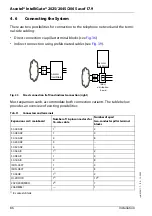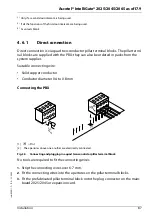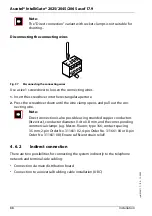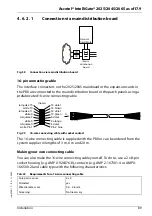
Ascotel® IntelliGate® 2025/2045/2065 as of I7.9
74
Installation
sy
d-
020
4/1.
7
– I7.
9
– 1
2
.2009
4. 3. 2
External Auxiliary Terminal Power Supply (ATPS)
An external 40V Auxiliary Terminal Power Supply (ATPS) has to be used if the inter-
nal power supply is no longer sufficient based on the power requirements calcu-
lated for powering the terminals or due to event messages signalling a supply over-
load. The ATPS provides a supply power of 250W for the terminals. The maximum
terminal supply requirements for a full configuration of the 2065 system is approx.
180 W, or approx. 502045W for the system.
Note:
– It is not possible to use ATPS and a DC (UPS-12V) supply module at the
same time. An external UPS or an inverter is required to be able to
ensure uninterruptible operation when using an ATPS system.
– When the UTPS is plugged into the PBX the internal power supply for
the AD2 terminals switches itself off. This is irrespective of whether or
not the ATPS auxiliary power supply is supplying power. If the ATPS
auxiliary power supply fails, all the connected AD2 terminals are there-
fore without power; however the PBX is still operational. As the failure
of the auxiliary power supply cannot be detected, no event message is
generated.
– Tips:
Dust off the auxiliary power supply fan from time to time.
In the event of a failure, disconnect the auxiliary power supply connec-
tor on the mainboard. The internal power supply will then power at
least some of the AD2 terminals (until the overload cutout triggers).
4. 3. 2. 1
Mounting the ATPS system
The ATPS power supply device is mounted in the immediate vicinity of the PBX.
Wall mounting has to be vertical (connections at the top or at the bottom). The
power supply unit is connected to the mainboard by its connecting cable (see
). Connection to the 230 V network is via the standard PBX mains cord. When
a PBX rack version is used, the ATPS can be mounted in the rack plug-in unit behind
the PBX or in a separate plug-in unit altogether.
















































